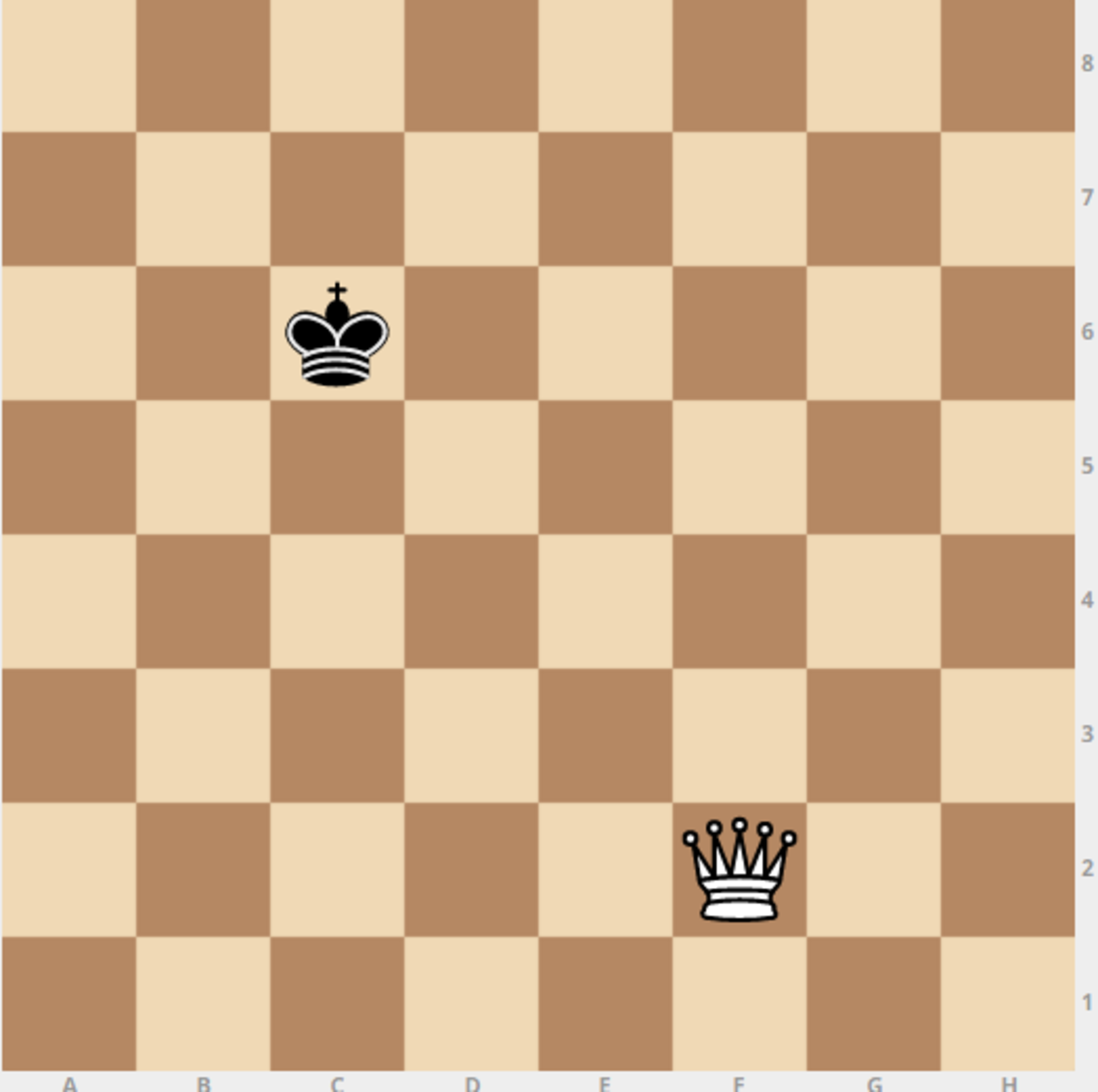King and Queen
 Dimitri places a Black King and a White Queen on an empty chessboard. If the probability that Dimitri places the King and the Queen on the chessboard such that the King is
NOT
in check (that is, the Queen is not attacking the Black King), can be expressed as
, in which
and
are coprime positive integers, find
.
Dimitri places a Black King and a White Queen on an empty chessboard. If the probability that Dimitri places the King and the Queen on the chessboard such that the King is
NOT
in check (that is, the Queen is not attacking the Black King), can be expressed as
, in which
and
are coprime positive integers, find
.
As an explicit example, if the Queen is on , the , , , , , , , , , , , , , , , , , , , , , and squares are under attack.
The King and the Queen cannot be placed in the same square.
This is the fifth problem of the set Look after the King!
The answer is 13.
This section requires Javascript.
You are seeing this because something didn't load right. We suggest you, (a) try
refreshing the page, (b) enabling javascript if it is disabled on your browser and,
finally, (c)
loading the
non-javascript version of this page
. We're sorry about the hassle.
Firstly, note that Dimitri can place the Queen in anyone of the 6 4 squares. As the King and the Queen can't be placed in the same square, Dimitri has 6 3 possible squares to place the Black King. Therefore, there are a total of 6 4 ⋅ 6 3 possible positions.
Secondly, note that wherever the Queen is placed, will be attacking its whole row and column. This means that the King can't be placed on the same column or row of the Queen. As each row and column is formed by 8 squares, and we are counting twice the square on which the Queen, there are a total of 6 3 − 1 4 = 4 9 squares on which Dimitri can place the King.
Now, the we need to consider that the Queen also attacks its diagonal; so, let's divide the Queen possible position in cases:
Finally, the probability that Dimitri places the King and the Queen on the chessboard such that the King is not in check is given by the expression
6 4 ⋅ 6 3 4 2 ⋅ 2 8 + 4 0 ⋅ 2 0 + 3 8 ⋅ 1 2 + 3 6 ⋅ 4 = 3 6 2 3
Thus, m = 2 3 and n = 3 6 , so n − m = 1 3 .